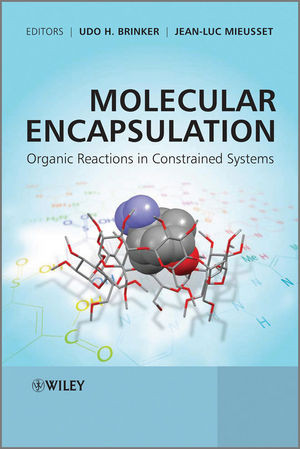

Most ebook files are in PDF format, so you can easily read them using various software such as Foxit Reader or directly on the Google Chrome browser.
Some ebook files are released by publishers in other formats such as .awz, .mobi, .epub, .fb2, etc. You may need to install specific software to read these formats on mobile/PC, such as Calibre.
Please read the tutorial at this link: https://ebookbell.com/faq
We offer FREE conversion to the popular formats you request; however, this may take some time. Therefore, right after payment, please email us, and we will try to provide the service as quickly as possible.
For some exceptional file formats or broken links (if any), please refrain from opening any disputes. Instead, email us first, and we will try to assist within a maximum of 6 hours.
EbookBell Team

4.4
72 reviewsThe following topics are covered in detail:
- general concepts governing the assembly of the substrate with the reaction vessel
- preparation of molecular reactors
- stabilization of reactive intermediates
- reactions in water, in organic solvents, and in the solid state
- photochemical reactions
- reactions with unusual regioselectivity
Molecular Encapsulation: Organic Reactions in Constrained Systems is an essential guide to the art of changing the outcome and the selectivity of a chemical reaction using nano-sized reaction vessels. It will find a place on the bookshelves of students and researchers working in the areas of supramolecular chemistry, nanotechnology, organic and pharmaceutical chemistry, and materials science as well.Content:
Chapter 1 Reaction Control by Molecular Recognition – A Survey from the Photochemical Perspective (pages 1–42): Cheng Yang, Chenfeng Ke, Yu Liu and Yoshihisa Inoue
Chapter 2 Cyclodextrins (pages 43–69): Ronald Breslow
Chapter 3 Cyclodextrins as Molecular Reactors (pages 71–89): Christopher J. Easton and Hideki Onagi
Chapter 4 Reactions Mediated by Cyclodextrins (pages 91–115): Keiko Takahashi
Chapter 5 Reactions in Zeolites (pages 117–143): Stephane Walspurger and Jean Sommer
Chapter 6 Chemistry in Self?Assembled Nanoreactors (pages 145–174): Jarl Ivar van der Vlugt, Tehila S. Koblenz, Jeroen Wassenaar and Joost N. H. Reek
Chapter 7 Concave Reagents (pages 175–199): Ulrich Luning
Chapter 8 Reactivity Control by Calixarenes (pages 201–225): Luigi Mandolini, Roberta Cacciapaglia and Stefano Di Stefano
Chapter 9 Reactions Inside Carcerands (pages 227–268): Ralf Warmuth
Chapter 10 Encapsulation of Reactive Intermediates (pages 269–308): Jean?Luc Mieusset and Udo H. Brinker
Chapter 11 Dye Encapsulation (pages 309–325): Jeremiah J. Gassensmith, Easwaran Arunkumar and Bradley D. Smith
Chapter 12 Organic Cations in Constrained Systems (pages 327–360): Werner Abraham and Lutz Grubert
Chapter 13 Proteins as Host for Enantioselective Catalysis: Artificial Metalloenzymes Based on the Biotin–Streptavidin Technology (pages 361–376): Jincheng Mao and Thomas R. Ward
Chapter 14 Chemical Reactions with RNA and DNA Enzymes (pages 377–396): Andres Jaschke
Chapter 15 Reactions in Supramolecular Systems (pages 397–420): Lucia Zakharova, Alla Mirgorodskaya, Elena Zhiltsova, Ludmila Kudryavtseva and Alexander Konovalov
Chapter 16 Encapsulation Processes by Bilayer Vesicles (pages 421–454): Marc C. A. Stuart and Jan B. F. N. Engberts
Chapter 17 Reactions in Liposomes (pages 455–491): Pasquale Stano and Pier Luigi Luisi